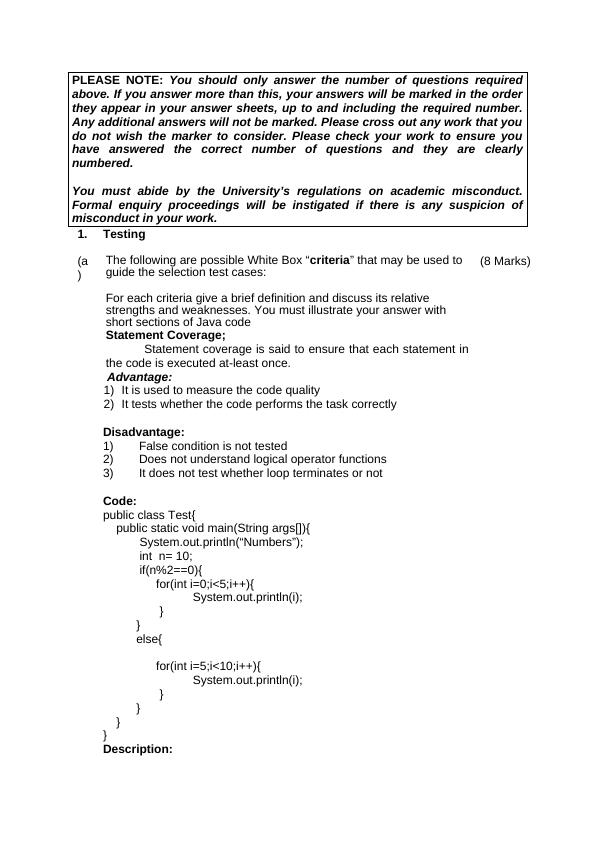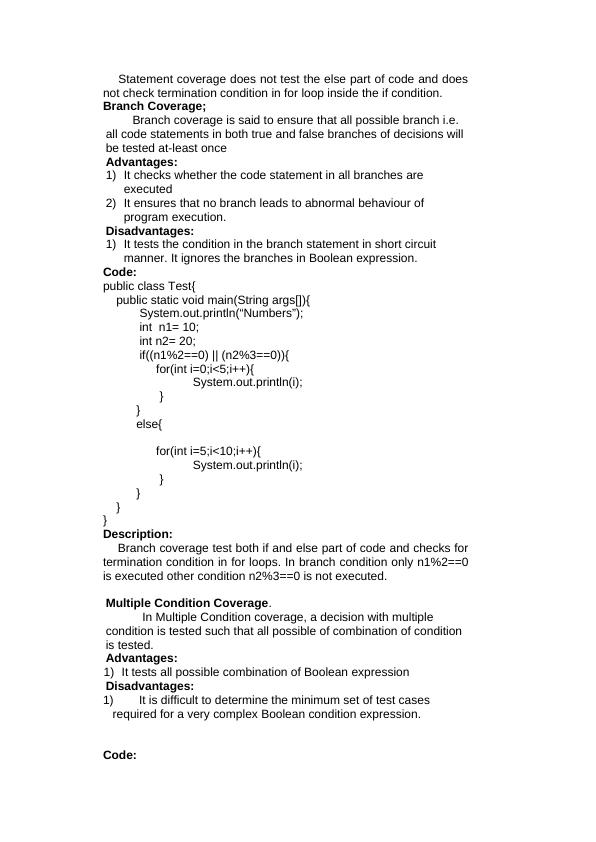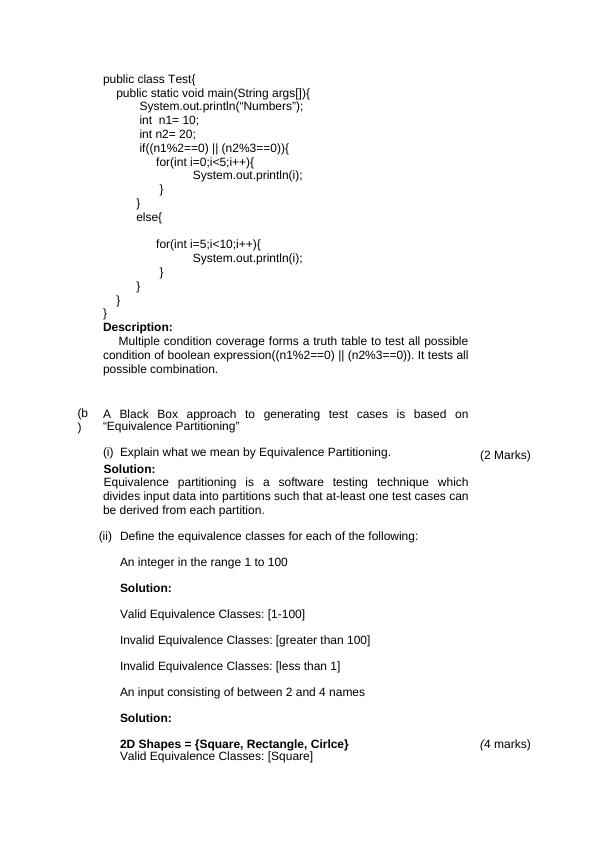Exam Paper: Programming 2
This is an examination paper for the module Programming 2 at Northumbria University.
17 Pages3422 Words494 Views
Added on 2022-11-26
About This Document
This exam paper is for the Programming 2 module. It covers topics like testing, inheritance, exceptions, and files. The paper includes questions on white box testing criteria, equivalence partitioning, abstract classes, interfaces, and exception handling. It also includes a question on the File class in Java. Download the paper now from Desklib.
Exam Paper: Programming 2
This is an examination paper for the module Programming 2 at Northumbria University.
Added on 2022-11-26
ShareRelated Documents
End of preview
Want to access all the pages? Upload your documents or become a member.
Measurement Techniques for Business Performance | Bank of Maldives
|19
|5746
|1
Time Constrained Assessment for BSc (Hons) Civil Engineering
|21
|4563
|74
4UDBE - Dynamic Business Environments
|19
|5317
|541
5UIBP Level 5 Innovation and Business Performance
|15
|5404
|866
5UEFM Level 5 Effective Financial Management
|22
|5908
|1273
Target Costing in Food Manufacturing Industry
|12
|4949
|42




